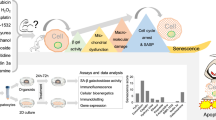Summary
The rat R-Y121B cell line is a unique cell line which has ornithine carbamoyltransferase (OCT, EC 2.1.3.3) and can be continuously cultured in a serum-free medium which lacks arginine but is supplemented with ornithine. The OCT gene expression was examined in R-Y121B cells and their parental H4-II-E cells. OCT activity in R-Y121B cells was about one-tenth of that of the adult rat liver while it was not detected at all in H4-II-E cells. Southern hybridization using an OCT cDNA probe containing the entire coding region showed that the OCT gene structure was apparently not different in R-Y121B cells, H4-II-E cells, or rat liver cells. Northern hybridization using the OCT cDNA probe detected a hybridizing signal in R-Y121B cells but not in H4-II-E cells. Reverse transcription-polymerase chain reaction (RT-PCR) showed that an expected size of the OCT cDNA fragment was amplified in R-Y121B cells but not in H4-II-E cells. The amplified fragment was confirmed to be a real rat OCT cDNA by the digestion of this fragment with two restriction enzymes and by the nucleotide sequencing of the fragment. These results indicated that OCT mRNA was present in R-Y121B cells but not in H4-II-E cells. Amino acid analysis showed that arginine was not present in the culture medium but was present in the hydrolysate of R-Y121B cells. The present experiments indicate that transcription, translation, and processing of OCT proceeds normally and the resultant OCT functions in R-Y121B cells, whereas the transcription does not occur in parental H4-II-E cells even though these cells have the normal gene.
Similar content being viewed by others
References
Boyde TRC, Rahmatullah M (1980) Optimization of conditions for the colorimetric determination of citrulline, using diacetyl monoxime. Anal Biochem 107: 424–431
Chomczynski P, Sacchi N (1987) Single-step method of RNA isolation by acid guanidinium thiocyanate-phenol-chloroform extraction. Anal Biochem 162: 156–159
De Gregorio A, Valentini G, Bellocco E, Desideri A, Cuzzocrea G (1993) A comparative study on liver ornithine carbamoyl transferase from a marine mammalStenella and an elasmobranchSphyrna zygaena. Comp Biochem Physiol 10513: 497–501
Delers A, Szpirer J, Szpirer C, Saggioro D (1984) Spontaneous and 5-azacytidine-induced reexpression of ornithine carbamoyl transferase in hepatoma cells. Mol Cell Biol 4: 809–812
Eagle H (1959) Amino acid metabolism in mammalian cell cultures. Science 130: 432–437
Farmer AA, Goss SJ (1991) BWTG3 hepatoma cells can acquire phenylalanine hydroxylase, cystathionine synthase and CPS-1 without genetic manipulation, but activation of the silent OTC gene requires cell fusion with hepatocytes. J Cell Sci 98: 533–538
Feinberg AP, Vogelstein B (1983) A technique for radiolabeling DNA restriction endonuclease fragments to high specific activity. Anal Biochem 132: 6–13
Hata A, Tsuzuki T, Shimada K, Takiguchi M, Mori M, Matsuda I (1988) Structure of the human ornithine transcarbamylase gene. J Biochem 103: 302–308
Horwich AL, Fenton WA, Williams KR, Kalousek F, Kraus JP, Doolittle RF, Konigsberg W, Rosenberg LE (1984) Structure and expression of a complementary DNA for the nuclear coded precursor of human mitochondrial ornithine transcarbamylase. Science 224: 1068–1074
Konno R, Sasaki M, Enami J, Niwa A (1995) Loss ofHindIII cleavage sites in thed-amino acid oxidase gene in some inbred strains of mice. Amino Acids 8: 97–107
Kraus JP, Hodges PE, Williamson CL, Horwich AL, Kalousek F, Williams KR, Rosenberg LE (1985) A cDNA clone for the precursor of rat mitochondrial ornithine transcarbamylase: comparison of rat and human leader sequences and conservation of catalytic sites. Nucleic Acids Res 13: 943–952
Levintow L, Eagle H (1961) Biochemistry of cultured mammalian cells. Annu Rev Biochem 30: 605–640
Lowry OH, Rosebrough NJ, Farr AL, Randall RJ (1951) Protein measurement with the Folin phenol reagent. J Biol Chem 193: 265–275
McIntyre P, Graf L, Mercer JFB, Wake SA, Hudson P, Hoogenraad N (1985) The primary structure of the imported mitochondrial protein, ornithine transcarbamylase from rat liver: mRNA levels during ontogeny. DNA 4: 147–156
Nishiyori A, Tashiro H, Kimura A, Akagi K, Yamamura K, Mori M, Takiguchi M (1994) Determination of tissue specificity of the enhancer by combinatorial operation of tissue-enriched transcription factors. J Biol Chem 269: 1323–1331
Niwa A, Yamamoto K, Yasumura Y (1979) Establishment of a rat hepatoma cell line which has ornithine carbamoyltransferase activity and grows continuously in argininedeprived medium. J Cell Physiol 98: 177–184
Niwa A, Yamamoto K, Sorimachi K, Yasumura Y (1980) Continuous culture of Reuber hepatoma cells in serum-free, arginine-, glutamine- and tyrosine-deprived chemically defined medium. In Vitro 16: 987–993
Pitot HC, Peraino C, Morse PA Jr, Potter VR (1964) Hepatomas in tissue culture compared with adapting liverin vivo. Natl Cancer Inst Monogr 13: 229–245
Reuber MD (1961) A transplantable bile-secreting hepatocellular carcinoma in the rat. J Natl Cancer Inst 26: 891–899
Ricciuti FC, Gelehrter TD, Rosenberg LE (1976) X-Chromosome inactivation in human liver: confirmation of X-linkage of ornithine transcarbamylase. Am J Hum Genet 28: 332–338
Sambrook J, Fritsch EF, Maniatis T (1989) Molecular cloning: a laboratory manual, 2nd edn. Cold Spring Harbor Laboratory Press, New York
Schimke RT (1964) Enzymes of arginine metabolism in mammalian cell culture. I. Repression of argininosuccinate synthetase and argininosuccinase. J Biol Chem 239: 136–145
Southern EM (1975) Detection of specific sequences among DNA fragments separated by gel electrophoresis. J Mol Biol 98: 503–517
Takiguchi M, Miura S, Mori M, Tatibana M, Nagata S, Kaziro Y (1984) Molecular cloning and nucleotide sequence of cDNA for rat ornithine carbamoyltransferase precursor. Proc Natl Acad Sci USA 81: 7412–7416
Takiguchi M, Murakami T, Miura S, Mori M (1987) Structure of the rat ornithine carbamoyltransferase gene, a large, X chromosome-linked gene with an atypical promoter. Proc Natl Acad Sci USA 84: 6136–6140
Widman LE, Golden JJ, Chasin LA (1979) Immortalization of normal liver functions in cell culture: rat hepatocyte-hepatoma cell hybrids expressing ornithine carbamoyltransferase activity. J Cell Physiol 100: 391–400
Author information
Authors and Affiliations
Rights and permissions
About this article
Cite this article
Shinohara, M., Konno, R., Nagashima, S. et al. Expression of ornithine carbamoyltransferase gene in rat hepatoma-derived cell lines, H4-II-E and R-Y121B. Amino Acids 12, 145–155 (1997). https://doi.org/10.1007/BF01386477
Received:
Accepted:
Issue Date:
DOI: https://doi.org/10.1007/BF01386477




